|
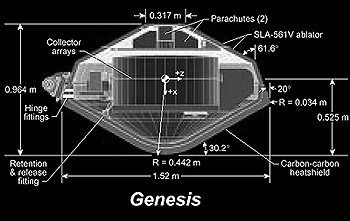
NASA Genesis mission website
Reentry conditions on September 8, 2004:
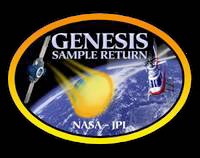
- Peak optical brightness: -9.2 magnitude
- Date: September 08, 2004 (daytime)
- Time: about 08:54-08:56 PDT (09:54-09:56 MDT, 15:54-15:56 UT)
- Mass: 225 kg
- Diameter: 1.52 meter
- Speed: 11.0 km/s
- Entry angle: 8.0 degrees
- Spin rate 15/s
- Expected peak brightness: -9.2 magnitude (360-630 nm, at 100 km distance)
- Landing site: U.S. Air Force Utah Test and Training Range (UTTR)
- Heat-shield material: Carbon-Carbon
- Peak heating 750 W/cm2
- Sample return: solar wind from L1 point
Sun and Moon (at Boise, Idaho - longitude W116.2, latitude N43.6):
- Begin civil twilight: 5:48 am. PDT (6:48 a.m Mountain Daylight Time)
- Sunrise: 6:17 a.m PDT, 7:17 a.m. MDT.
- Altitude of Sun at 8:54 a.m. PDT (8:54 MST): 27.2 degrees
- Azimuth of the Sun at 8:54 a.m.: 110.0 degrees E of N.

Genesis approach trajectory on September 08, 2004.
The Genesis spacecraft will receive its final course corrections 24 hours before approach, when it moves at only 1 km/s relative to Earth. 4 hours before entry, the Sample Return Capsule (SRC) will separate from the spacecraft, which will continue to move along the capsule's path at higher altitude. The SRC will fall to Earth and speed up. It will continue to be tracked by the Deepspace Network until 1/2 hour prior to entry. Optical tracking at Maui will follow the capsule during nighttime conditions while approaching Earth until it hits the highest atmospheric layers.
The Genesis capsule will first emit light due to collisions with air molecules at around 200 km altitude over the Pacific Ocean. The object will be tracked by U.S. Air Force Space Command using ground-based radar. By that time, the capsule has fallen into the Earth's gravity well and has a speed now of 11.0 km/s (at 135 km altitude). It may become visible in the daytime morning sky over Bent, Oregon, when it is still at 125 km altitude. For mission operators this is the moment it enters the atmosphere. It will decellerate and stop emitting light at around 40 km altitude, and a parachute will deploy at 36 km altitude. Once ablation stops and ionization dissipates, the descending capsule will have a UHF beacon that provides gps information.
A gravity switch senses the braking caused by the high-speed entry into the atmosphere, and then initiate the timing sequence leading to deployment of the craft's drogue parachute and parafoil. The onboard computer will order the lid of the capsule to pop off and release the drogue chute, which will slow the descent to allow safe deployment of the parafoil chute almost 4 minutes later at 6.1 km altitude. This large rectangular "lifting" parachute attached to the Genesis sample return capsule allows it to glide slowly toward Earth. The capsule parachute will be caught by a hook carried by a helicopter before hitting the ground to prevent the sample panels from breaking.
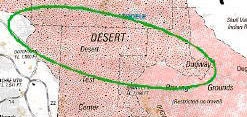
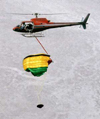
Test of in-air capture of sample capsule. Map of the general impact area.
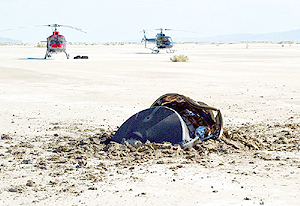 Note added after observation
Note added after observation
The reentry occurred much as predicted and was observed from the NKC-135 "FISTA" aircraft just south-west of the impact area. The parachute did not deploy.
A mishap investigation revealed that this was because of design error that involved the orientation of gravity-switch devices. The sample return capsule was observed to tumble down in the last mile over UTTR and crashed close to the expected impact point. Much of the heat shield was unharmed and key parts of the collection panels could also be recovered. More: Genesis mission website
|















